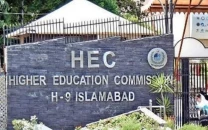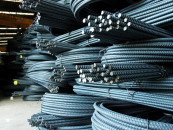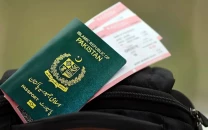Tube wells imperil community enterprise
A lone tube well can dry dozens of ‘karezs’ running through the province

For the semi-arid highlands of Balochistan, where policy is often behindhand, social equity has been largely driven by means of community enterprise— a system where assets are controlled, managed and directed by the local populace.
Over centuries, the social capital harnessed through this system has kept the local communities close-knit; in some ways acting as the very thread that weaves Balochistan’s complicated but lasting social fabric.
So is also true for water used for agricultural needs, which is a scarce resource in the region. Like other things, its allocation had long been managed by tribal tradition and run by social control in the form of Karez irrigation tunnels that tap into groundwater. After running for some distance, these tunnels would come out in the open and the water would be conducted to the command area for all of community to use.
However, the unbudgeable transition to tube wells, catalysed by government subsidies, is believed to be responsible for bringing the indigenous method to naught, the burden of which is feared to erode Balochistan’s social fabric among other fates.
Living in the name
Close to Quetta’s densely populated Sariab Road area, is the interestingly named neighbourhood of Loher Karez, which should be a testament to the region’s historic association with the irrigation system.
However, where locals once knew the area’s Karez channels like the back of their hand, owing to the diffusion of the practice, like much of Balochistan, the people of Loher Karez appear to have also forgotten where the channels run. While over time, commercial developments in the form of increased installation of tube wells, construction of plazas, residential buildings, parks, and housing schemes have erased the vestiges of the indigenous irrigation system, leaving much of Loher Karez’s association to the name.
According to Mama Yousaf, a local farmer from the Mastung district, the installation of a single tube well can dry up dozens of Karezes, which unlike the wells are owned communally and benefit thousands of people. “There were more than 360 Karezes here, which have all become useless now,” the farmer said lamentingly, staring at one of the many solarised tube well in the distance as it were the source of his worries.
Yousaf believes that the headless adoption of tube wells, other than impacting social cohesion, also has perilous effects on the region’s environment and the ecosystem. Shedding light on the notion, Khuzda resident Sultan Ahmed Shahwani, who is the author of Missing Impression of Jhalawan, pointed to the depletion of groundwater. He alleges that it is not the lack of rainfall that has exhausted groundwater resources in Balochistan, but rather poor management of water resources and unchecked installation of tube wells, which has, in turn, killed the Karez system. “If groundwater table continues to drop at this rate, it may soon spell doom for Balochistan socially, economically, and environmentally,” he warned.
Per Shahwani, organisations working for sustainable agriculture practices and protection of the environment in Balochistan, should intervene and ensure agro-environmental mapping of the province. He further suggested that government institutions should conduct a comprehensive survey of water reservoirs to ensure their proper maintenance, in addition to the development of new reservoirs where needed.
Speaking in this regard, Public Health Engineering (PHE) department official Zubair Ahmed revealed that the authentic number of Karezes in Quetta city and across the province remains unknown. Addressing the regulation of tube well installation, he maintained that there are strict laws and procedures in place, that require approval of concerned departments before installation of new tube wells. “However, the implementation of these laws in letter and spirit is one area that requires the government’s attention,” he told The Express Tribune.
Published in The Express Tribune, February 24th, 2022.



















COMMENTS
Comments are moderated and generally will be posted if they are on-topic and not abusive.
For more information, please see our Comments FAQ